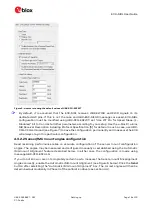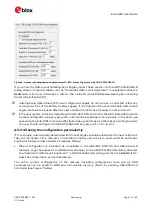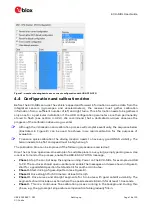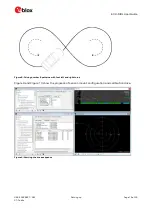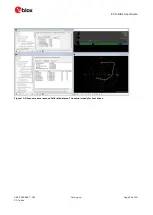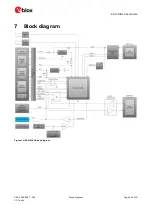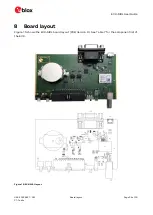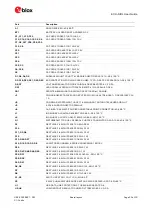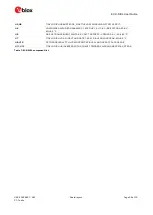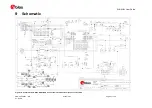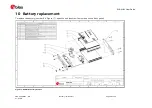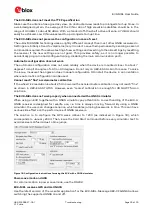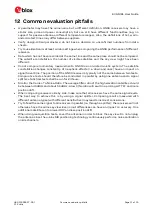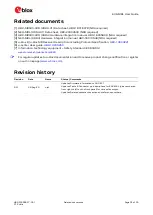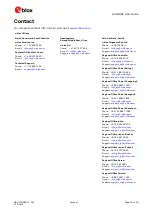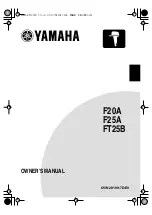
EVK-M8L User Guide
UBX-20028627 - R01
Troubleshooting
Page 30 of 33
C1-Public
The EVK-M8L does not meet the TTFF specification
Make sure the antenna has a good sky view. An obstructed view leads to prolonged start-up times. In
a well-designed system, the average of the C/No ratio of high elevation satellites should be in the
range of 40 dBHz to about 50 dBHz. With a standard off-the-shelf active antenna, 47 dBHz should
easily be achieved. Low C/No values lead to a prolonged start-up time.
The EVK-M8L does not preserve the configuration in case of reset
The u-blox M8 GNSS technology uses a slightly different concept than most other GNSS receivers do.
Settings are initially stored to volatile memory. In order to save them permanently, sending a second
command is required. This allows testing of new settings and reverting to the old settings by resetting
the receiver if the new settings are not good. This provides safety, as it is no longer possible to
accidentally program a bad configuration (e.g. disabling the main communication port).
Automatic configuration does not work
The automatic configuration does not work reliably when the device is mounted closer to about 7
degrees from pitch angles of +90 or -90 degrees. Do not rely on UBX-ESF-ALG in this case. To solve
the issue, measure the angles and use manual configuration OR install the device in an orientation
where automatic configuration can be used.
Cannot reach “fine” accelerometer calibration
If the wheel tick resolution is about 25 cm or worse the accelerometer calibration may not reach “fine”
as shown in UBX-ESF-STATUS. However, even “coarse” calibration is enough for 3D GAWT fusion
solutions.
The EVK-M8L does not work properly when connected with a GNSS simulator
When using an EVK together with a GNSS simulator, pay attention to correct handling of the EVK. A
GNSS receiver is designed for real-life use, i.e. time is always moving forward. By using a GNSS
simulator, the user can change scenarios, which enables jumping backwards in time. This can have
serious side effects on the performance of GNSS receivers.
The solution is to configure the GPS week rollover to 1200 (as indicated in Figure 18), which
corresponds to January 2003. Then, issue the Cold Start command before every simulator test to
avoid receiver confusion due to time jumps
.
Figure 18: Configuration instructions for using the EVK with a GNSS simulator
Power save mode and USB
For communication in power save mode, use the RS232.
EVK-M8L receives GPS and GLONASS
Use the latest version of the u-center application for the EVK-M8L. Message UBX-CFG-GNSS allows
switching the supported GNSS on and off.

